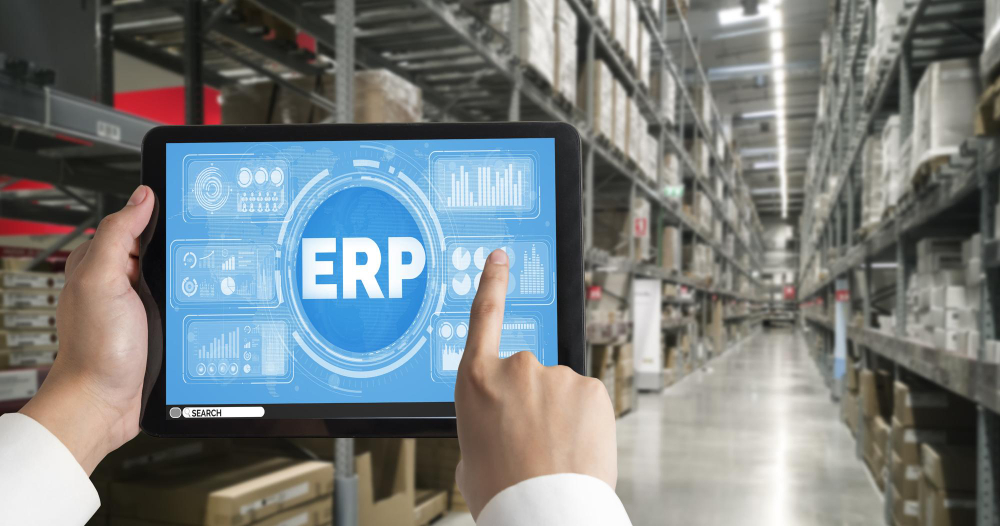- Email: info@crystalteck.com
- Location: Trichy
- Office Hours: 09:00 AM - 7:00 PM
iCrystal ERP Analytics
- ERP Analytics use of data analysis and reporting tools within Enterprise Resource Planning (ERP) systems to derive insights, make informed decisions, and optimize business processes.
- ERP systems collect vast amounts of data from various functional areas of an organization, including finance, inventory, sales, procurement, production, and human resources.
- ERP analytics involve integrating data from different modules and sources within the ERP system to create a unified view of the organization's operations.

Uncover Insights, Drive Excellence
ERP Analytics at Your Service!
- Data Analysis
- Reporting
- Predictive Analytics
- Optimization
- Operational Insights
Analytical tools within the ERP system process and analyze data to identify trends, patterns, correlations, and anomalies. This analysis helps in understanding the performance of different business processes and areas within the organization.
ERP analytics generate reports, dashboards, and visualizations to present key performance indicators (KPIs), metrics, and insights in a comprehensible format. These reports enable decision-makers to monitor performance, track progress towards goals, and identify areas for improvement.
Advanced ERP analytics may include predictive modeling techniques to forecast future trends, demand, or outcomes based on historical data and statistical algorithms. Predictive analytics can help in proactive decision-making and planning.
ERP analytics provide insights into inefficiencies, bottlenecks, and areas for optimization within business processes. By identifying areas for improvement, organizations can streamline operations, reduce costs, and enhance productivity.
ERP analytics offer operational insights across various functions such as sales, inventory management, production, and supply chain. These insights enable organizations to make data-driven decisions to improve efficiency and effectiveness.
Key Aspects of ERP Analytics
Data Integration
Bringing together data from various sources and modules within the ERP system to create a unified dataset for analysis.
Diagnostic Analytics
Cleansing and Preparation
Ensuring data quality by cleaning and transforming raw data into a format suitable for analysis.
Prescriptive Analytics
Recommending actions or strategies to optimize business processes, mitigate risks, or capitalize on opportunities based on analytical insights.
Descriptive Analytics
Examining historical data to understand past performance, trends, and patterns within the organization.
Cross-functional Insights
Providing insights across various functional areas such as finance, sales, inventory management, production, and supply chain to drive holistic decision-making.
Pain Points
- Data Complexity: ERP systems often contain large volumes of complex data from multiple sources, making it challenging to integrate, cleanse, and analyze effectively.
- Data Quality Issues: Poor data quality, including inaccuracies, inconsistencies, and incompleteness, can undermine the reliability and validity of analytical insights.
- Integration Challenges: Integrating data from disparate systems and modules within the ERP environment, as well as external sources, can be complex and time-consuming.
- Skill Gap: Organizations may lack the necessary skills and expertise in data analytics, including data science, statistics, and data visualization, to extract meaningful insights from ERP data.
- Resource Constraints: Limited resources, including budget, time, and manpower, can hinder the implementation and maintenance of ERP analytics initiatives.
- Complexity of Analytics Tools:ERP analytics tools may be complex and require specialized knowledge to use effectively, posing challenges for end-users and administrators.
- Performance Issues:Analyzing large datasets within ERP systems can strain system performance, leading to slow response times and decreased user productivity.
- Lack of User Adoption: Resistance to change and a lack of understanding of the value of ERP analytics can impede user adoption and acceptance of analytical insights.
Why ERP Analytics?
Decision Making
By leveraging data from various sources within the ERP system, organizations can make informed decisions based on real-time insights rather than relying on intuition or guesswork.
Operational Efficiency
ERP analytics help identify inefficiencies and bottlenecks in business processes, enabling organizations to streamline operations, reduce costs, and improve productivity.
Resource Utilization
By analyzing data on resource allocation, such as inventory levels, production capacity, and workforce utilization, organizations can optimize resource utilization and minimize waste.
